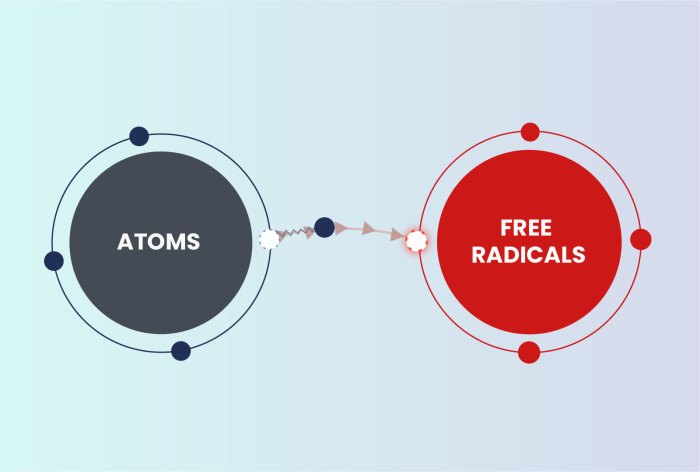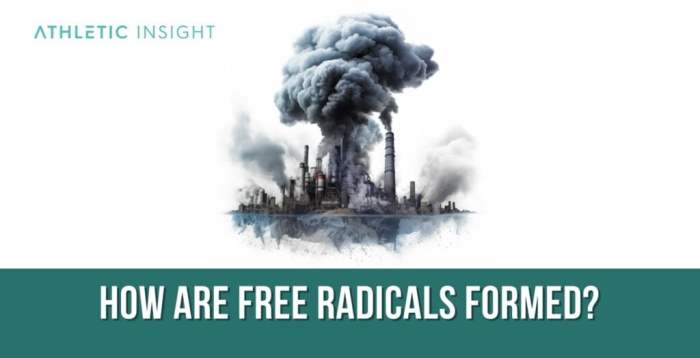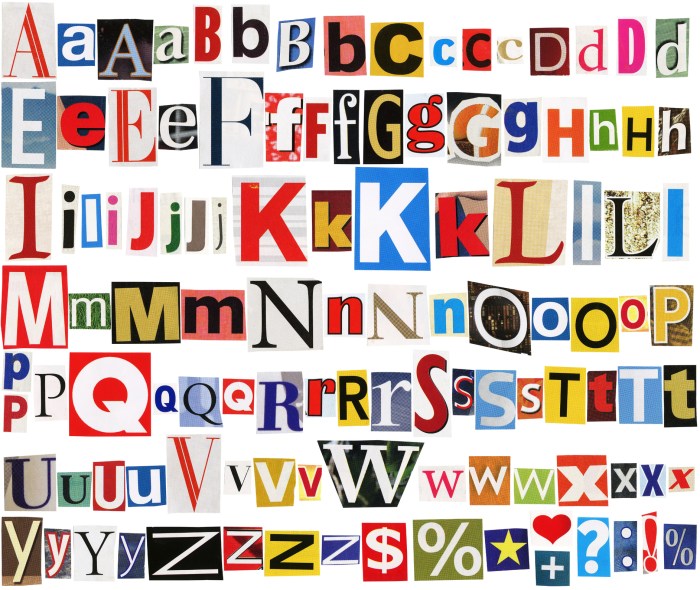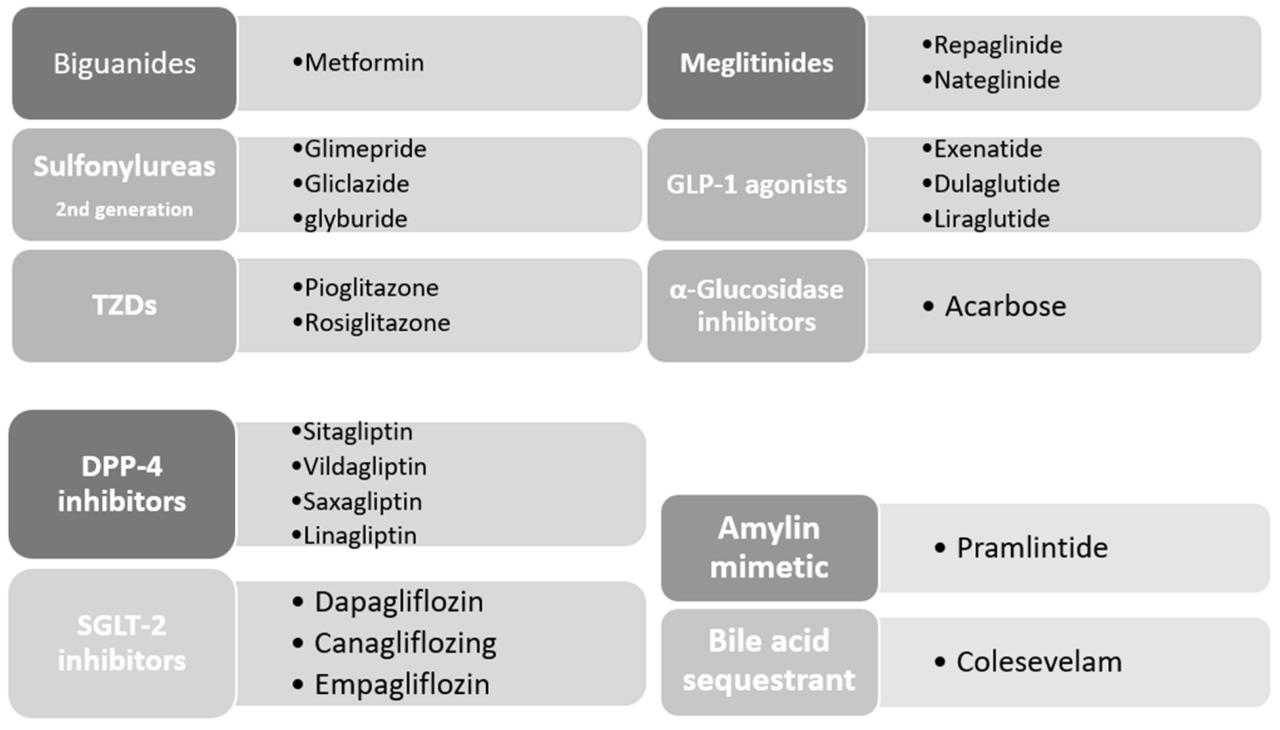Shortness of breath treatment is a multifaceted approach addressing a wide range of potential causes. From respiratory issues and cardiac concerns to anxiety-related triggers, understanding the root cause is crucial for effective management. This guide delves into the diagnostic process, explores various treatment options, and provides insights into preventive strategies. We’ll cover everything from common respiratory and cardiac treatments to the role of anxiety management and even home remedies.
This in-depth exploration aims to equip readers with a better understanding of shortness of breath, enabling them to make informed decisions about their health. The information presented here is intended for educational purposes only and should not be considered medical advice. Always consult with a healthcare professional for personalized guidance.
Introduction to Shortness of Breath Treatment

Shortness of breath, medically termed dyspnea, is a subjective experience of discomfort or difficulty in breathing. It’s a common symptom that can range from mild inconvenience to life-threatening distress. Understanding the causes and seeking appropriate medical attention are crucial for effective management and treatment.Various factors can contribute to shortness of breath. These encompass a wide spectrum of conditions, from relatively benign issues like anxiety to severe underlying diseases affecting the respiratory or cardiovascular systems.
Identifying the root cause is essential for tailoring an effective treatment plan.
Causes of Shortness of Breath
Shortness of breath can stem from a multitude of causes, broadly categorized as respiratory, cardiac, and anxiety-related. Respiratory causes involve problems within the lungs themselves, such as asthma, chronic obstructive pulmonary disease (COPD), or pneumonia. Cardiac causes are linked to the heart’s ability to pump blood efficiently, such as heart failure or angina. Anxiety disorders can also trigger shortness of breath due to the physiological response to stress.
Respiratory Causes
Respiratory conditions often manifest with symptoms like coughing, wheezing, and chest tightness, alongside shortness of breath. Examples include:
- Asthma: Characterized by inflammation and narrowing of the airways, leading to difficulty breathing. Symptoms typically worsen with exertion or exposure to triggers like allergens or irritants.
- Chronic Obstructive Pulmonary Disease (COPD): A progressive lung disease encompassing emphysema and chronic bronchitis, characterized by persistent shortness of breath, cough, and mucus production. Smoking is a major risk factor.
- Pneumonia: An infection of the lungs, often accompanied by fever, chills, and a productive cough, alongside shortness of breath.
- Pulmonary Embolism: A blood clot in the lungs, which can cause sudden and severe shortness of breath, chest pain, and rapid heart rate. This is a serious condition requiring immediate medical attention.
Cardiac Causes
Cardiac conditions often present with symptoms related to the heart’s function. Examples include:
- Heart Failure: A condition where the heart struggles to pump enough blood to meet the body’s needs. This can manifest as shortness of breath, especially when lying down, along with fatigue and swelling in the legs and ankles.
- Angina: Chest pain or discomfort, often radiating to the arm or jaw, that can be associated with shortness of breath. It’s frequently triggered by exertion or stress.
- Arrhythmias: Irregular heartbeats that can cause palpitations and shortness of breath.
Anxiety-Related Causes
Anxiety disorders can lead to shortness of breath through physiological responses to stress.
Figuring out shortness of breath treatment can be tricky, especially when you’re looking at lifestyle changes. Sometimes, seemingly unrelated issues can actually impact your breathing. For example, you might need to consider factors like what you’re taking before you use stool softeners, as certain medications or supplements can have unexpected respiratory effects. Understanding these interactions is key to a more effective shortness of breath treatment plan.
Checking out this helpful guide on before you use stool softeners can give you a better grasp on these potential connections.
- Panic Attacks: Sudden episodes of intense fear and anxiety can cause a rapid heartbeat, shortness of breath, sweating, and trembling.
- Generalized Anxiety Disorder (GAD): Chronic worry and anxiety can manifest in persistent shortness of breath, accompanied by other symptoms like muscle tension and sleep disturbances.
Importance of Seeking Medical Attention
Experiencing shortness of breath can be a sign of a serious underlying condition. Delaying medical evaluation can have severe consequences. A thorough medical assessment, including a physical examination and diagnostic tests, is crucial for determining the cause and initiating appropriate treatment.
Common Conditions Related to Shortness of Breath
| Condition | Symptoms | Potential Causes | Treatment Options |
|---|---|---|---|
| Asthma | Wheezing, coughing, chest tightness, shortness of breath | Allergens, irritants, exercise, stress | Inhalers, medications, avoidance of triggers |
| Heart Failure | Shortness of breath, especially when lying down, fatigue, swelling in legs and ankles | High blood pressure, coronary artery disease | Medications, lifestyle changes, possibly surgery |
| Anxiety | Rapid heartbeat, shortness of breath, sweating, trembling | Stressful situations, panic attacks | Therapy, medications, relaxation techniques |
| Pneumonia | Cough, fever, chills, shortness of breath, chest pain | Bacterial or viral infection | Antibiotics, rest, supportive care |
Diagnostic Procedures for Shortness of Breath
Uncovering the cause of shortness of breath is crucial for effective treatment. A thorough diagnostic approach combines a detailed medical history, physical examination, and various tests to pinpoint the underlying issue. This process often involves a systematic evaluation, progressing from basic to more specialized tests as needed.Identifying the root cause of shortness of breath necessitates a multi-faceted approach.
This involves considering various factors, including the patient’s medical history, symptoms, and the results of physical examinations and diagnostic tests.
Common Diagnostic Tests
Understanding the range of diagnostic tests available is essential for a comprehensive evaluation. Different tests provide varying levels of detail and are selected based on the suspected cause of the shortness of breath. These tests may range from simple blood tests to more complex imaging procedures.
Medical History and Physical Examination
A detailed medical history is fundamental to the diagnostic process. This includes inquiries about past illnesses, allergies, medications, and lifestyle factors. The physical examination plays a vital role in evaluating the patient’s overall condition. Physical examination findings, such as heart rate, respiratory rate, and presence of edema, provide valuable clues to the underlying cause of shortness of breath.
Observations of the patient’s general appearance and any visible abnormalities are also considered.
Blood Tests
Blood tests are frequently used to evaluate various aspects of the patient’s health. They can provide information about the presence of infection, anemia, or other blood disorders. Common blood tests for shortness of breath include complete blood counts (CBC), comprehensive metabolic panels (CMP), and specific blood tests for cardiac markers, such as troponin. Elevated white blood cell counts, for instance, may suggest an infection, while low hemoglobin levels might indicate anemia.
Imaging Techniques
Imaging techniques offer a visual representation of the internal structures of the body. X-rays, for instance, provide a basic overview of the lungs and chest, while chest CT scans offer a more detailed examination. An echocardiogram, a specialized ultrasound of the heart, is crucial in evaluating heart function and detecting structural abnormalities. Echocardiograms help assess the pumping ability of the heart and identify potential valve problems or structural defects.
Pulmonary Function Tests
Pulmonary function tests (PFTs) assess the function of the lungs. These tests measure lung volumes, capacities, and airflow rates, providing insights into the mechanics of breathing. Results of PFTs can reveal restrictive or obstructive lung diseases. A reduced forced expiratory volume in one second (FEV1) might suggest an obstructive airway disease, while reduced total lung capacity might suggest a restrictive disorder.
Electrocardiogram (ECG)
The ECG records the electrical activity of the heart. This non-invasive test helps evaluate the heart’s rhythm and identify any potential abnormalities. An ECG is a routine part of the evaluation for shortness of breath, especially when cardiac causes are suspected.
Table of Diagnostic Tests, Shortness of breath treatment
| Test | Purpose | Typical Results in Case of Shortness of Breath |
|---|---|---|
| Complete Blood Count (CBC) | Assess blood cell counts | Low red blood cell count (anemia), elevated white blood cell count (infection) |
| Comprehensive Metabolic Panel (CMP) | Evaluate kidney and liver function | Abnormal liver enzymes or kidney function tests |
| Chest X-ray | Visualize the lungs and chest | Consolidation, pleural effusion, or other abnormalities |
| Echocardiogram | Assess heart structure and function | Valve abnormalities, reduced ejection fraction, or other structural defects |
| Pulmonary Function Tests (PFTs) | Evaluate lung function | Reduced lung volumes or airflow rates |
| Electrocardiogram (ECG) | Assess heart rhythm | Abnormal heart rhythms, or evidence of previous heart attacks |
Diagnostic Flowchart for Shortness of Breath
[A visual flowchart illustrating the diagnostic process, including decision points based on symptoms, medical history, physical examination findings, and the results of various diagnostic tests. This should not be interpreted as a substitute for medical advice. A healthcare professional should guide the diagnostic process.]
Treatment Approaches for Shortness of Breath
Treating shortness of breath requires a multifaceted approach, targeting the underlying cause. Effective management often involves a combination of medical interventions, lifestyle adjustments, and supportive care. Understanding the specific cause is crucial for tailoring an appropriate treatment plan.The diverse range of potential causes for shortness of breath necessitates a careful evaluation to determine the most suitable treatment strategy.
This includes considering the patient’s medical history, physical examination findings, and results from diagnostic tests.
Medication Management
Medications play a significant role in managing shortness of breath, particularly when the underlying cause involves conditions like asthma, chronic obstructive pulmonary disease (COPD), or heart failure. The selection of medications depends on the specific diagnosis and the severity of symptoms. Careful monitoring and adjustment of dosages are essential to optimize effectiveness and minimize adverse effects.
Common Medications for Shortness of Breath
- Bronchodilators, such as albuterol, are frequently prescribed for conditions like asthma and COPD. They work by relaxing the muscles surrounding the airways, improving airflow and reducing shortness of breath. Potential side effects include nervousness, tremors, and rapid heart rate. Examples include inhalers, which are commonly used for their localized effect and quick relief.
- Inhaled corticosteroids, like fluticasone, are often used to reduce airway inflammation and prevent exacerbations in asthma and COPD. These medications are generally well-tolerated, but some patients may experience throat irritation or oral thrush. The long-term use of inhaled corticosteroids is crucial for managing chronic respiratory conditions.
- Phosphodiesterase-5 inhibitors, like sildenafil, may be beneficial for patients with pulmonary arterial hypertension (PAH). These medications improve blood flow to the lungs, alleviating shortness of breath. Potential side effects include headache, flushing, and visual disturbances.
- Diuretics, such as furosemide, are sometimes used in heart failure cases to reduce fluid buildup in the lungs, easing shortness of breath. Side effects can include dehydration, electrolyte imbalances, and low blood pressure. Careful monitoring of fluid intake and electrolyte levels is crucial.
Comparative Analysis of Treatment Options
| Treatment Option | Efficacy | Cost | Patient Preferences |
|---|---|---|---|
| Bronchodilators | Generally effective for acute shortness of breath episodes | Variable, depending on the specific medication and dosage | Often well-tolerated, especially when administered via inhalers |
| Inhaled corticosteroids | Effective in preventing exacerbations and reducing inflammation | Moderate to high | Long-term commitment to prevent flare-ups |
| Phosphodiesterase-5 inhibitors | Helpful in improving blood flow in PAH | Moderate to high | May require careful monitoring for potential side effects |
| Diuretics | Effective in reducing fluid buildup in heart failure | Generally lower cost | Potential for side effects like dehydration and electrolyte imbalances |
Lifestyle Modifications
Lifestyle modifications play a significant role in managing shortness of breath, especially when combined with medical interventions. A healthy lifestyle contributes to overall respiratory health and can reduce the frequency and severity of symptoms.
- Smoking cessation is crucial for individuals with COPD or other respiratory conditions. Quitting smoking dramatically improves lung function and reduces shortness of breath. This is an often overlooked but very significant aspect of treatment.
- Regular exercise, even if it’s light-intensity activity, can improve lung capacity and overall cardiovascular health. Even small steps, like walking for 15-30 minutes daily, can make a positive impact on shortness of breath.
- Weight management, especially for patients with obesity, can reduce strain on the respiratory system. Losing even a modest amount of weight can significantly improve shortness of breath.
- Proper nutrition, including a balanced diet rich in fruits, vegetables, and whole grains, provides the necessary nutrients for optimal respiratory health. This is crucial for maintaining overall health and supporting lung function.
Respiratory Treatments for Shortness of Breath
Managing shortness of breath often involves a multifaceted approach, and respiratory treatments play a crucial role in alleviating symptoms and improving overall well-being. These treatments aim to improve airflow, reduce inflammation, and enhance oxygen delivery to the body’s tissues. Understanding the different types of respiratory treatments, their mechanisms, and their limitations is essential for both patients and healthcare providers.Respiratory treatments for shortness of breath utilize various methods to address the underlying causes and symptoms.
The effectiveness of each treatment depends on the specific condition causing the shortness of breath and the patient’s individual response.
Oxygen Therapy
Oxygen therapy is a common and often essential treatment for shortness of breath. It involves delivering supplemental oxygen to the body, helping to increase the amount of oxygen in the blood. This is particularly crucial for patients with conditions like chronic obstructive pulmonary disease (COPD) or heart failure, where the body may not be able to obtain sufficient oxygen from the air.
The therapy can be delivered through nasal cannulas, masks, or other devices, and the flow rate is carefully adjusted based on the patient’s needs and blood oxygen levels.
Bronchodilators
Bronchodilators are medications that relax the muscles surrounding the airways, widening them and improving airflow. They are frequently used for conditions like asthma and COPD, where airway constriction can significantly impair breathing. Bronchodilators can be administered via inhalers, nebulizers, or oral medications. The effectiveness of bronchodilators varies depending on the type of medication and the severity of the condition.
Breathing Exercises
Breathing exercises, often prescribed in conjunction with other treatments, can help improve lung function and breathing patterns. These exercises aim to enhance lung capacity, improve diaphragmatic breathing, and reduce anxiety associated with shortness of breath. Regular practice can strengthen respiratory muscles and improve overall respiratory efficiency.
Other Respiratory Treatments
- Mechanical Ventilation: This involves using a machine to assist or replace the work of breathing. It is a critical intervention for patients with severe respiratory failure, providing support until the underlying condition improves or stabilizes. It’s often used in intensive care units (ICUs) and involves a ventilator connected to the patient’s airways.
- Chest Physiotherapy: This involves techniques like percussion and postural drainage to help clear mucus from the lungs. It’s often used for patients with conditions like cystic fibrosis or pneumonia, which can lead to mucus buildup in the airways. Specific techniques may involve positioning the patient in various positions to facilitate mucus drainage.
- Inhaled Corticosteroids: These medications reduce airway inflammation, which is beneficial for patients with conditions like asthma or chronic bronchitis. They are typically administered via inhalers and are used to prevent or reduce the frequency and severity of asthma attacks. The medication targets inflammation, reducing swelling and irritation in the airways.
- Surfactant Therapy: This treatment involves administering a synthetic substance that coats the alveoli in the lungs. It’s particularly important for premature infants who may have insufficient amounts of natural surfactant. Surfactant helps maintain the stability of the alveoli, facilitating proper gas exchange.
Effectiveness and Limitations of Respiratory Treatments
The effectiveness of respiratory treatments varies depending on several factors, including the underlying cause of shortness of breath, the patient’s overall health, and the individual response to treatment. Some treatments may provide significant relief, while others may only offer partial or temporary improvement. Factors like adherence to prescribed regimens and potential side effects should be carefully considered.
Techniques and Procedures for Administering Treatments
The specific techniques and procedures for administering respiratory treatments depend on the type of treatment. Oxygen therapy, for instance, involves using appropriate delivery devices and carefully monitoring oxygen saturation levels. Bronchodilators are often administered via inhalers or nebulizers, requiring proper technique to ensure optimal drug delivery to the lungs. Breathing exercises involve specific instructions and guidance from healthcare professionals to maximize their benefits.
Cardiac Treatments for Shortness of Breath
Heart conditions are a frequent cause of shortness of breath. Effective management of this symptom often involves a multifaceted approach, encompassing medication, procedures, and lifestyle modifications tailored to the specific cardiac condition. This section explores the diverse range of cardiac treatments, highlighting the nuances of treatment strategies for different heart conditions.Understanding the underlying cause of shortness of breath in cardiac patients is paramount.
The treatments employed will vary significantly based on the specific cardiac condition, such as coronary artery disease, heart failure, or valvular heart disease. The severity of the condition and the patient’s overall health also play critical roles in determining the most appropriate course of action.
Common Medications for Cardiac Shortness of Breath
Medications are frequently a cornerstone of treatment for shortness of breath stemming from cardiac issues. These medications help manage the underlying condition and alleviate symptoms.
- Angiotensin-converting enzyme (ACE) inhibitors: These medications are often prescribed for heart failure to help relax blood vessels and reduce the workload on the heart. An example is Lisinopril, which helps lower blood pressure and improve blood flow.
- Beta-blockers: These medications help slow the heart rate and reduce the force of contractions, which can be beneficial for certain types of heart conditions causing shortness of breath.
Metoprolol is a common example.
- Diuretics: These medications help the body eliminate excess fluid, which can alleviate swelling and shortness of breath associated with heart failure. Furosemide is a commonly used diuretic.
- Vasodilators: These medications relax blood vessels, increasing blood flow and potentially alleviating shortness of breath. Nitroglycerin is a common example, particularly for angina-related shortness of breath.
Cardiac Procedures for Shortness of Breath
Certain procedures may be necessary to address the underlying cardiac issue causing shortness of breath. The specific procedure depends on the nature of the condition.
- Coronary artery bypass grafting (CABG): This procedure is often employed for coronary artery disease. It involves rerouting blood flow around blocked arteries, improving blood supply to the heart and potentially alleviating shortness of breath.
- Angioplasty and stenting: These procedures can open blocked arteries, improving blood flow and reducing symptoms like shortness of breath. Stents are often placed to keep the artery open.
- Valve repair or replacement: If valvular heart disease is the cause, repair or replacement of the damaged valve may be necessary to restore proper blood flow and alleviate shortness of breath.
Lifestyle Changes for Cardiac Shortness of Breath
Lifestyle modifications are often crucial in managing cardiac conditions and their associated shortness of breath.
- Dietary changes: A heart-healthy diet, low in saturated fats, sodium, and cholesterol, can significantly improve cardiovascular health and reduce the risk of future problems. This may lead to a reduction in shortness of breath.
- Regular exercise: Engaging in regular physical activity, under the guidance of a healthcare professional, can improve cardiovascular fitness and overall health, leading to improved symptom management.
- Stress management techniques: Chronic stress can negatively impact the heart. Practicing stress-reducing techniques like meditation, yoga, or deep breathing can improve overall well-being and potentially alleviate shortness of breath.
- Smoking cessation: Smoking significantly increases the risk of heart disease and related complications. Quitting smoking is a crucial step towards improved cardiovascular health.
Cardiac Rehabilitation and Shortness of Breath
Cardiac rehabilitation plays a vital role in managing cardiac conditions and their impact on shortness of breath. This structured program often includes exercise training, education, and support groups.
- Gradual exercise progression: Cardiac rehabilitation programs typically involve a gradual increase in exercise intensity, tailored to the individual’s needs and limitations.
- Patient education: Participants learn about their condition, risk factors, and ways to manage their symptoms effectively.
- Support and encouragement: The supportive environment fosters adherence to the rehabilitation program and promotes long-term lifestyle changes.
Potential Complications of Cardiac Treatments
Any medical intervention carries potential risks. The potential complications associated with cardiac treatments should be carefully considered.
- Bleeding: Surgical procedures, such as CABG, may carry a risk of bleeding.
- Infection: Post-procedure infections are a possibility.
- Blood clots: Some procedures increase the risk of blood clots, which can have serious consequences.
- Arrhythmias: Certain medications or procedures may increase the risk of abnormal heart rhythms.
Anxiety-Related Shortness of Breath Treatment
Anxiety can trigger a cascade of physiological responses, including shortness of breath. This often stems from the body’s “fight-or-flight” response, where the sympathetic nervous system elevates heart rate and breathing to prepare for perceived danger. While this response is crucial for survival in acute situations, chronic anxiety can lead to persistent shortness of breath, impacting daily life.Understanding the connection between anxiety and shortness of breath is crucial for effective treatment.
Anxiety-induced shortness of breath is often characterized by a feeling of tightness in the chest, rapid and shallow breathing, and a sense of panic. These symptoms can be distressing and debilitating, making it difficult to focus, engage in social activities, and maintain overall well-being. Treatment strategies aim to address both the physical symptoms and the underlying anxiety.
Treatment Methods for Anxiety-Related Shortness of Breath
Various methods are effective in managing anxiety-related shortness of breath. These include therapy, relaxation techniques, and medication, often used in combination to achieve optimal results.
Therapeutic Approaches for Anxiety
Different therapeutic approaches target different aspects of anxiety. Cognitive Behavioral Therapy (CBT) helps identify and challenge negative thought patterns that contribute to anxiety, while Mindfulness-Based Stress Reduction (MBSR) encourages present-moment awareness to reduce reactivity to anxiety-provoking stimuli. Acceptance and Commitment Therapy (ACT) focuses on accepting difficult emotions and thoughts without judgment, promoting psychological flexibility.
| Therapeutic Approach | Focus | Potential Benefits |
|---|---|---|
| Cognitive Behavioral Therapy (CBT) | Identifying and modifying negative thought patterns and behaviors | Reduced anxiety symptoms, improved coping mechanisms, enhanced self-awareness |
| Mindfulness-Based Stress Reduction (MBSR) | Developing present-moment awareness and reducing reactivity to stress | Improved attention span, decreased physiological stress response, enhanced emotional regulation |
| Acceptance and Commitment Therapy (ACT) | Accepting difficult thoughts and emotions without judgment, focusing on values and actions | Increased psychological flexibility, reduced emotional avoidance, improved well-being |
Relaxation Techniques for Shortness of Breath
Relaxation techniques are powerful tools for managing anxiety-related shortness of breath. These techniques aim to calm the nervous system and reduce the physiological responses associated with anxiety. Deep breathing exercises, progressive muscle relaxation, and guided imagery are common examples.
- Deep Breathing Exercises: Diaphragmatic breathing, or belly breathing, involves inhaling deeply into the abdomen, expanding the diaphragm. This technique helps regulate the breath, slowing it down and promoting relaxation. Examples include box breathing, where you inhale, hold, exhale, and hold for equal counts. Practicing deep breathing exercises regularly can significantly reduce shortness of breath symptoms.
- Progressive Muscle Relaxation: This technique involves systematically tensing and relaxing different muscle groups in the body. By consciously relaxing muscles, the body’s overall tension decreases, leading to a calming effect. This can be particularly helpful for those experiencing muscle tension related to anxiety.
- Guided Imagery: This involves creating a mental image of a peaceful or calming scene, focusing on sensory details like sights, sounds, and smells. This can help distract from anxious thoughts and promote relaxation. Examples might involve visualizing a serene beach, a quiet forest, or a cozy fireplace.
Psychological Support
Psychological support plays a critical role in managing anxiety-related shortness of breath. Therapists can provide a safe space for individuals to explore their anxieties, develop coping mechanisms, and address any underlying mental health concerns. This support can help individuals feel understood and empowered to manage their symptoms effectively.
Trying to figure out shortness of breath treatment? While there are many options, it’s crucial to be mindful of potential complications, like those associated with certain supplements. For instance, turmeric, a popular spice, might seem harmless, but be sure to check out the potential risks, such as those detailed in this informative article about 10 serious side effects of turmeric.
Ultimately, always consult a doctor for personalized advice on shortness of breath treatment.
Home Remedies and Self-Care
Managing mild shortness of breath can sometimes involve home remedies and self-care strategies. These approaches can offer temporary relief and support, but it’s crucial to understand their limitations and when professional medical intervention is essential. Always prioritize consulting a healthcare provider for proper diagnosis and treatment, especially for persistent or severe cases.Using home remedies for mild shortness of breath can involve various strategies.
These strategies can potentially ease symptoms, but they are not a substitute for professional medical advice and treatment.
Potential Home Remedies
Home remedies for mild shortness of breath often focus on easing breathing discomfort and supporting the body’s natural healing processes. These approaches can offer temporary relief, but they are not a substitute for professional medical advice and treatment.
Dealing with shortness of breath can be tricky, and various underlying conditions can cause it. While exploring potential causes, it’s important to consider the less common possibilities, like certain types of ovarian cancer. Understanding the different types of ovarian cancer, as detailed in this resource, types of ovarian cancer , can help healthcare professionals pinpoint the root of the problem.
Ultimately, effective shortness of breath treatment hinges on accurate diagnosis, so don’t hesitate to discuss any unusual symptoms with your doctor.
- Rest and Relaxation: Resting in a comfortable position, avoiding strenuous activities, and practicing relaxation techniques like deep breathing exercises can help reduce the body’s oxygen demand, easing shortness of breath.
- Elevate the Head: Elevating the head and upper body with pillows while resting can improve breathing by reducing pressure on the chest and lungs.
- Hydration: Staying well-hydrated can help thin mucus and improve overall respiratory function.
- Humidification: Using a humidifier to add moisture to the air can help soothe irritated airways and make breathing easier.
- Avoiding Irritants: Identifying and avoiding triggers such as smoke, strong odors, or allergens can minimize respiratory distress.
- Warm Compress: Applying a warm compress to the chest area can sometimes provide temporary relief from muscle tension or discomfort.
Limitations of Home Remedies for Severe Cases
Home remedies are generally not sufficient for severe or persistent shortness of breath. Symptoms like sudden onset, worsening difficulty breathing, chest pain, or bluish skin discoloration require immediate medical attention. These symptoms could indicate a serious underlying condition that requires professional diagnosis and treatment.
- Sudden onset or worsening symptoms: If shortness of breath develops suddenly or progressively worsens, it’s crucial to seek immediate medical help, as this could indicate a serious condition requiring urgent intervention.
- Accompanying symptoms: If shortness of breath is accompanied by other symptoms such as chest pain, dizziness, palpitations, or bluish discoloration of the skin (cyanosis), immediate medical attention is necessary.
- Inability to perform basic tasks: If shortness of breath interferes with daily activities, it may indicate a more severe condition requiring professional medical evaluation and treatment.
Monitoring Symptoms and Seeking Medical Advice
Regular monitoring of symptoms is essential when using home remedies. Tracking the duration, severity, and frequency of shortness of breath can help assess the effectiveness of the remedies and determine when professional medical advice is needed.
- Symptom Tracking: Maintaining a record of the onset, duration, severity, and frequency of shortness of breath can aid in understanding its pattern and determining the need for medical intervention.
- Recognizing Patterns: Understanding the triggers and patterns of shortness of breath can help identify potential causes and inform treatment strategies.
- Knowing When to Seek Help: Recognizing worsening symptoms or the presence of additional symptoms is critical for determining the necessity of medical attention.
Prevention Strategies

Preventing shortness of breath often involves understanding the underlying causes and taking proactive steps to mitigate risk factors. This proactive approach can significantly improve quality of life and reduce the likelihood of experiencing episodes of breathlessness. By identifying and addressing potential triggers, individuals can better manage their respiratory and cardiovascular health.Addressing the root causes of shortness of breath is crucial for effective prevention.
This often involves lifestyle modifications and regular medical check-ups to detect and address potential issues early on. Implementing preventative measures tailored to individual circumstances can significantly reduce the risk of future episodes and improve overall well-being.
Identifying Risk Factors
Several factors contribute to the development of shortness of breath. These include a family history of respiratory or cardiovascular conditions, smoking, exposure to environmental pollutants, and obesity. Understanding these risk factors allows for targeted preventative measures.
Preventative Measures for Different Causes
Effective prevention strategies vary based on the underlying cause of shortness of breath. For example, individuals with asthma should implement strategies to avoid triggers like allergens and pollutants, while those with heart conditions might focus on maintaining a healthy weight and blood pressure.
Lifestyle Changes for Prevention
Implementing certain lifestyle changes can significantly reduce the risk of shortness of breath. These include maintaining a healthy weight, adopting a balanced diet rich in fruits, vegetables, and whole grains, and engaging in regular physical activity. Smoking cessation is paramount for reducing respiratory complications.
Table Comparing Preventative Strategies
| Cause of Shortness of Breath | Preventative Strategy | Description |
|---|---|---|
| Asthma | Avoidance of triggers | Identifying and minimizing exposure to allergens, irritants, and other environmental factors that can trigger asthma attacks. |
| Heart Disease | Healthy Lifestyle | Maintaining a healthy weight, controlling blood pressure, and engaging in regular exercise. |
| Obesity | Weight Management | Following a balanced diet and regular exercise routine to reduce excess weight. |
| Smoking | Cessation | Quitting smoking is crucial for preventing respiratory complications. |
| Environmental Pollution | Exposure Reduction | Minimizing exposure to pollutants and irritants, such as industrial fumes or air pollution. |
Importance of Regular Check-ups and Health Screenings
Regular check-ups and health screenings play a critical role in preventing shortness of breath. These screenings can detect underlying conditions early, allowing for prompt intervention and management, potentially preventing more serious complications. Early detection and treatment of conditions like heart disease and chronic lung conditions can significantly improve long-term health outcomes and reduce the risk of experiencing shortness of breath.
Concluding Remarks: Shortness Of Breath Treatment
In conclusion, addressing shortness of breath requires a personalized approach considering the underlying cause. From initial diagnosis to tailored treatment options, including respiratory therapies, cardiac interventions, and anxiety management strategies, this guide offers a comprehensive overview. Remember, early intervention and ongoing medical care are key to effective management and preventing complications. Always prioritize professional medical advice for your specific situation.




























